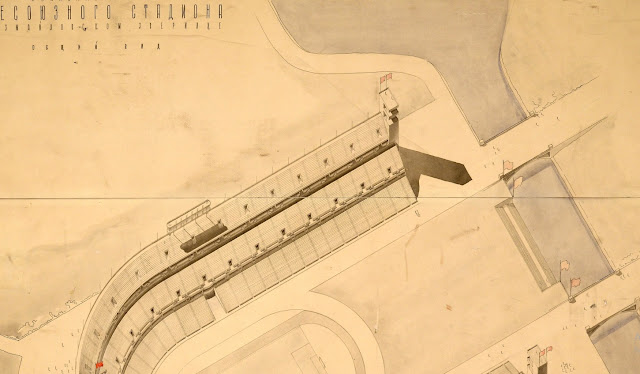Fra pochi giorni iniziano i mondiali di calcio in Russia e a Mosca presso il Schusev State Museum of Architecture si inaugurerà, il prossimo 29 Maggio, una bella mostra sulla storia degli stadi realizzati in questo ultimo secolo in Russia .
CS
Schusev State Museum of Architecture (Moscow, Russia) presents the exhibition project «The architecture of the stadiums» timed to the 21st FIFA World Cup. The championship will be the main sporting event of 2018 and will be held at 12 stadiums in 11 cities of Russia. Sports arenas are of particular importance in such events. Their architecture embodies the most current trends of their time.
The Museum has a unique collection of materials that reveal the almost century-long history of the stadiums construction and design in the USSR. The exhibition’s purpose is to acquaint the society with little-studied and previously not exhibited materials on the history of the construction of sports objects in our country.
The first part of the exhibition is historical. It consists of architectural drawings and photos of the realized projects. There will be revealed the history of the legendary Moscow stadium “Dynamo”, sports complex in Luzhniki, “Kirov Stadium" in Leningrad, sports arenas in Minsk, Yerevan, Kiev and other cities of the country. The stadiums were designed by such outstanding Soviet architects as Nikolay Kolly, Nikolay Ladovsky, Dmitry Iofan, Alexander Vlasov and many others. The exhibition will show the evolution and diversity of different types of buildings – from U-shaped stadiums with two playing fields, athletics arenas with a motorcycle track to multi-functional complexes of the modernism era.
The second part – modern – is dedicated to the arenas where the matches of this year's championship will be held. The exposition will include not only models, projects and photos of new and reconstructed stadiums, but also materials on the best foreign sports objects built for international competitions of last decades.
Thematic lectures, excursions in several languages, as well as conferences and discussions with leading architects are planned within the framework of the exhibition. The inclusive program consists of tactile copies of three-dimensional exhibits, guided tours in sign language and accompanying texts in Braille.



